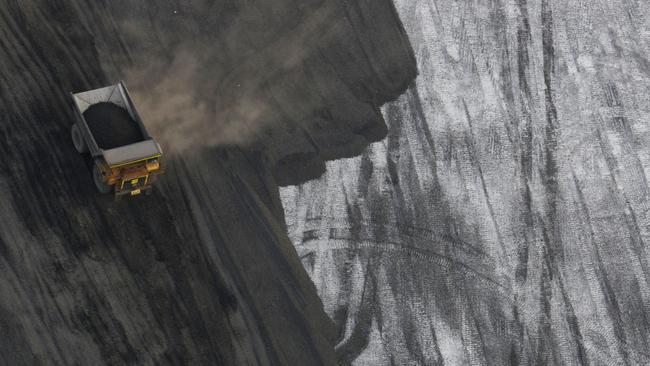Miner Peabody Energy cops big margin call on rising coal prices
It’s not easy for a miner to find a way to lose money at times of record prices, but US-headquartered coal miner Peabody Energy appears to have managed it.

Coal miner Peabody Energy has been caught out to the tune of $US534m by sharply rising coal prices, with the company forced to raise $US150m in fresh debt to cover the hedge book at one of its NSW mines.
While Peabody’s Australian and US coal miners will be generating rivers of cash at current prices, after the benchmark spot price of Australian thermal coal surged above $US400 a tonne last week, the bizarre margin call highlights the side effects of the wild swings in commodity prices as a result of Russia’s invasion of Ukraine.
In addition to the extraordinary rise in thermal coal prices, uncertainty around the supply of nickel from Russia also caused an extraordinary spike in trading on the London Metal Exchange on Monday night.
Prices jumped almost 90 per cent to an all-time record just shy of $US55,000 a tonne, sparking market rumours that Chinese nickel major Tsingshan Group had been caught in a major short position in the commodity, and potentially faces a major margin call of its own.
Peabody’s margin call is not the result of market trading, but a function of hedging positions taken out by the company as it returned its Wambo underground operation to full production levels in early 2021, however.
Peabody said on Monday night it had 1.9 million tonnes in “coal derivative products” covering production at its Wambo underground mine that were more than $US330 a tonne out of the money late last week.
About 1.2 million tonnes of the contract were due to be settled in 2022, and the remainder in 2023.
“These hedge contracts were put in place to support the profitability of the mine, securing anticipated average prices of $84 per metric ton through mid-2023,” the company said.
“The Newcastle financial price for March closed at $US419.50 on March 4, 2022, which is 248 per cent above the closing index price of $US169.17 on December 31, 2021. As a result, the company has posted an additional $US534 million to satisfy the margin requirements for its derivative contracts since December 31, 2021.”
The Wambo underground mine produced 2.4 million tonnes of coal in 2021.
While the remainder of Peabody’s production is unhedged and should get the full value of the rapid coal price rise, the company said it had taken out a $US150m unsecured debt facility with Goldman Sachs to cover the margin call, at a 10 per cent interest rate, repayable in 2025.
Peabody runs two operations at Wambo. As well as the underground mine, it also has a nearby open-cut joint venture with Glencore. That joint venture is not caught up in Peabody’s latest hedging misadventure.
But the Wambo underground operation has been an ongoing source of troubles for the US-headquartered coal miner.
Peabody lapsed into Chapter 11 bankruptcy in 2016, becoming the highest profile victim of the last severe downturn in coal prices, but traded its way back to the markets a year later.
In 2020, as thermal coal prices plunged, Peabody temporarily scaled back production at the Wambo underground mine to preserve cash after plunging to a $US130m loss in the first quarter of the year.
Its financial troubles forced Peabody to negotiate a standstill agreement in late 2020 with lenders owed $US1bn ($1.4bn), or risk going under for the second time in four years, as Peabody crashed to a $US1.87bn loss for the full year.
While Peabody avoided a second bankruptcy filing, to do so it was forced to separate its most profitable Australian mine – the Wilpinjong thermal coal mine in NSW – from the rest of its corporate structure and raised fresh capital against the mine’s assets.
Rising coal prices in 2021 helped Peabody to a $US360m profit, and the company has recently been buying back some of its debt. But it is still to get the full benefit from the contribution of Wilpinjong, which still sits in a separate corporate structure owing about $US395m.





To join the conversation, please log in. Don't have an account? Register
Join the conversation, you are commenting as Logout